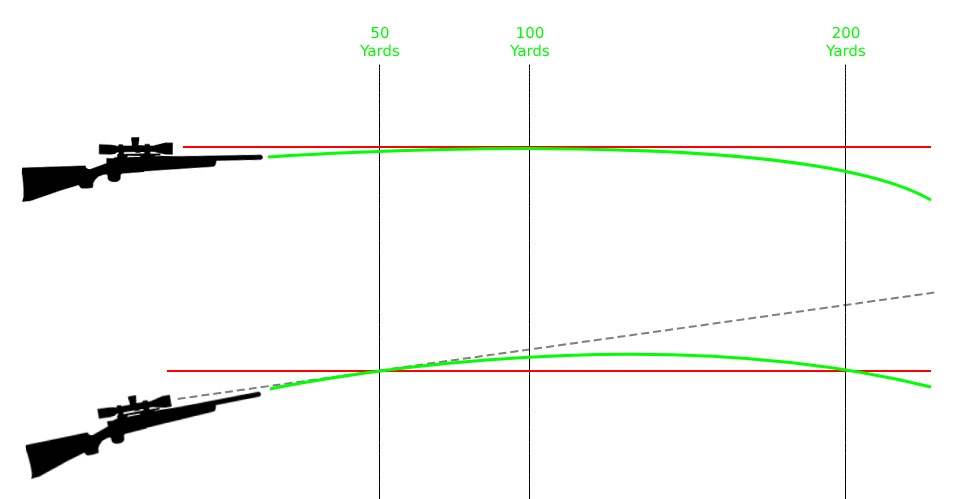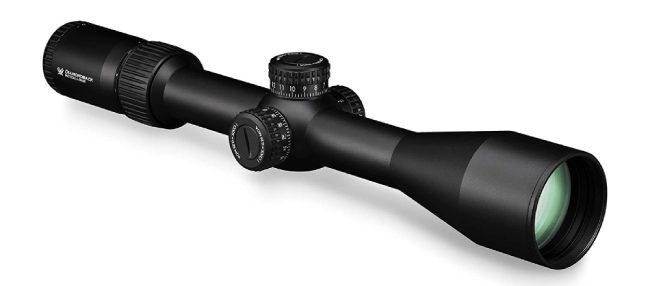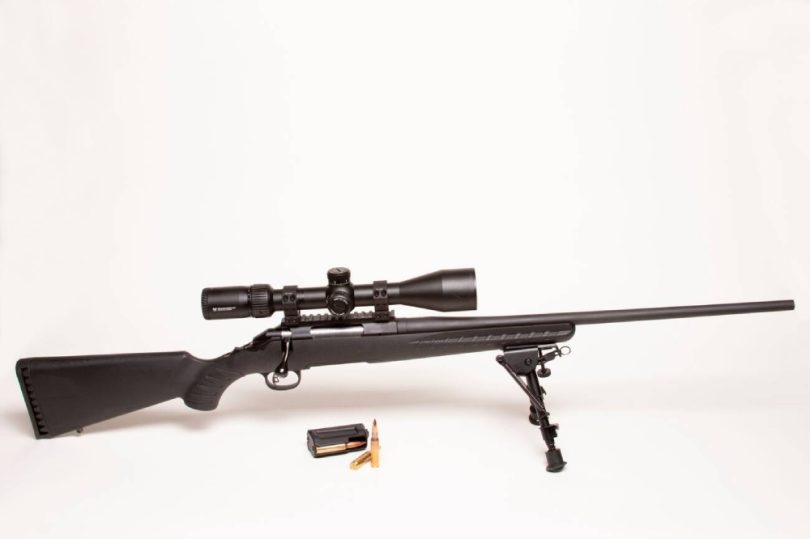The Vortex Diamondback Tactical is a high-quality, versatile scope that is perfect for a wide range of shooting applications. It can assist you in taking precise shots at a distance whether you’re a hunter, a competition shooter, or a member of law enforcement. And to help you get the most out of this incredible piece of gear, we’ll walk you through the process of how to zero Vortex Diamondback Tactical scope.
What is Zeroing a Scope?

Before we talk about zeroing the Diamondback Tactical, you should know what does it actually mean to zero a scope. Zeroing is done by adjusting the reticle to precisely align it with the point of impact of the bullet. Once you are able to properly zero your scope, then you can aim at a target with the reticle and shoot. And the bullet will end up exactly where you were pointing the reticle.
One thing you should understand is that sighting a scope and zeroing a scope is two different thing. They are not the same.
Sighting in a scope involves adjusting the scope so that the point of impact is at the desired distance.
On the other hand, zeroing a scope covers adjusting the scope so that the point of impact is where the reticle is pointing at a specific distance. To put it more simply, when a scope is zeroed, it is also sighted in.
Required Tools
To zero your Vortex Diamondback Tactical, you’ll need a few basic tools. These include:
- A shooting rest or bipod
- A target
- A good quality torque driver
You will need a shooting rest or bipod to help you keep your rifle steady while you’re aiming at the target. While zeroing, it is vital that you use one of these devices, as it will help you make more precise adjustments.
A target is a must for zeroing your scope. You can use a paper target, a steel target, or anything else that you can shoot at. Just make sure that it is large and visible enough for you to see where your shots are landing.
Another essential tool for this task is a torque driver. You will need it to tighten screws and bolts to a specific torque (or tightness) level. This is important when zeroing a scope, as the scope needs to be securely mounted to the rifle in order for it to work correctly.
Preparation
Before you learn how to zero Vortex Diamondback Tactical Scope and start zeroing your scope, you need to make sure you are well prepared. This includes the following:
Choosing a suitable place for zeroing: It’s essential to ensure that the site you are choosing for zeroing is secure and secluded. For the best results, look for a flat, level area with a backstop to catch any errant shots. It’s also important to check that no people or animals are in the vicinity, so no one is unintentionally put in harm’s way.
Make sure that the area behind the target is safe for bullets to make contact should your aim be a little off.
Setting up your shooting rest or bipod: When setting up your shooting rest or bipod, be sure to make it nice and solid with a level resting place. This will help you make more precise tweaks to your scope for an even better shot!
Placing your target at the appropriate distance: The Vortex Diamondback Tactical is designed for long-range shooting, so you’ll want to zero it at the distance at which you’ll be using it most often.The appropriate distance for zeroing your scope will depend on the type of shooting you’ll be doing.
For long-range shooting, you will want to zero your scope at a distance of at least 100 yards and 50 yards for medium-range shooting.
How to Zero Vortex Diamondback Tactical Scope

Now that you’re all set up, it’s time to learn how to set zero on vortex diamondback tactical. The first step is to sight in the scope. This involves adjusting the elevation and windage turrets (the knobs on the top and side of the scope) so that the reticle is aligned with the point of impact of the bullet.
Here’s how to do it:
- Fire a shot at your target.
- Observe where the bullet hit the target in relation to the reticle.
- Make the necessary adjustments to the elevation and windage turrets to align the reticle with the point of impact.
- Fire another shot and repeat the process until the reticle and the point of impact are perfectly aligned.
Use the elevation turret knob on the scope to regulate the reticle’s up-and-down movement and adjust the point of impact of the bullet for changes in elevation (or altitude).
And, on the side of the scope, you will find the windage turret knob for windage adjustments. Use it to control the reticle’s left and right movement. This will help you control the point of impact of the bullet for alterations in the wind’s direction and speed.
When adjusting the turrets, it’s important to make small adjustments at a time. Each click of the turrets will typically move the point of impact of the bullet by ¼ MOA (minute of angle). So if your bullet is hitting 1 inch to the left of the reticle at 100 yards, you’ll want to adjust the windage turret 4 clicks to the right.
Adjusting Your Vortex Diamondback Scope
Once you have the reticle and point of aim set, you can make any fine-tunings to your scope that you might need. This could include tinkering with the eyepiece focus or any other adjustments. You must keep the reticle in focus so that you can have a clear image while aiming at your target.
Maintenance
Proper maintenance is key to keeping your Vortex Diamondback Tactical in top working condition. Here are a few tips to keep in mind:
Keep the lens of your scope clean and free of dust, dirt, and fingerprints. Glare from a dirty lens might make it challenging to view your target properly. To clean the lens, use a premium lens cleaning solution and a microfiber cloth. Paper towels and other materials that might harm the lens should be avoided.
It’s also important to keep the lens free of scratches and other damage. When you are not using your Vortex Diamondback Tactical scope, keep it in a secure case. This will help preserve the lens’s health and protect it from becoming damaged.
You should not expose your scope to extreme temperatures as this might cause internal components to expand or compress. This might cause your optical device to become misaligned, making zeroing difficult. If you must carry your scope in high conditions, place it in a safe container and allow it to adjust to room temperature before use.
Finally, use the torque driver to properly tighten all of the screws and fasteners. This ensures that the sight is securely attached to the rifle and does not move while in use.
Conclusion
Zeroing your Vortex Diamondback Tactical is a simple process if you know how to zero Vortex Diamondback tactical scope. This can help you get the most out of your optical device. By following the steps outlined in this blog post, you’ll be able to make accurate shots at long distances. Remember to choose a safe location, use a shooting rest or bipod, and make small adjustments to the elevation and windage turrets. Proper maintenance and care of your scope will help to ensure that it remains in top working condition for years to come.
FAQs
Q: Does the Vortex Diamondback Tactical have a zero reset?
A: Yes, the Vortex Diamondback Tactical does have a zero-reset feature. You can move the knobs without losing your previous adjustments, so you can easily get your aim back to where you want it.
Q: Does Vortex Diamondback have parallax adjustment?
A: No, the Vortex Diamondback does not feature parallax adjustment.









Leave a Comment